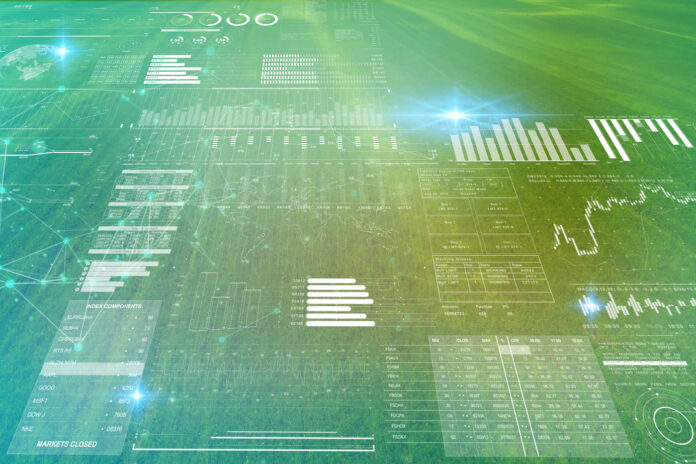Cannabis manufacturing is a uniquely rewarding yet challenging task. The plant is fickle, and a competitive market with tight margins leaves zero room for error. In order to see a profit, farmers and processors must do everything they can to get the best possible product to the end consumer while performing at peak efficiency.
Automation is quickly becoming the key to achieving this lofty goal. Other industries, including mainstream agriculture, are heavily reliant on automated systems to prevent supply chain bottlenecks and reduce costs.
The cannabis space is seeing a wide range of automation solutions throughout the plant’s life cycle and all of the way to final packaging for dispensary shelves. From controlled irrigation at the farm to high-tech trim and sort machines post-cure, more operators than ever are deploying automation to improve their operations and profitability.
“Our plants are healthier, more productive, and the quality has improved,” said Travis Carter, owner of Vice Cannabis. The Maine-based cultivator utilizes automated environmental controls and irrigation in his facility. “Automation also allows us to have free time to enjoy life with friends and family”.
Automation in the Garden: Precision and Profit
Nearly any cannabis cultivator will tell you they aren’t farmers — they’re problem solvers. The plant requires extreme precision both in its environment and inputs to protect the crop and boost potency. It’s also an incredibly resource-intensive business, both in terms of utilities and labor.
Automation tackles both of these simultaneously by establishing stability and sustainability. Growers can control and monitor things like feeding, lighting, and environmental conditions with the touch of a button to fine-tune processes and ensure everything meets exact specifications. This leads to happier plants and helps prevent issues before they start.
“Efficiencies are created when the automation system completes repetitive and simplistic tasks such as nutrient mixing, watering, and other time-consuming jobs that are required on a regular basis. This allows growers to focus on more advanced aspects of the cultivation process to maximize yield while reducing staffing costs associated with these tasks,” said Chris Ellis, co-founder and CEO of AI Grow, a provider of integrated automation systems for controlled growing environments.
Carter agreed with this sentiment, seeing a multitude of benefits within his operation.
“Having irrigation and omitting hand watering has given our team a lot more time to spend on plant care which is a huge plus,” he explained. “I’ve also found that plants actually respond better to slower and lower volumes of water instead of watering by hand, all at once.”
Ellis added that installing sensors that can help maintain ideal growing conditions such as temperature and humidity can further reduce stress on plants while maximizing yields. He said that deploying automation solutions synced through one unified platform is the most effective use of the technology.
“From compliance reporting to equipment control, a fully integrated system collects information, processes that information, and finally takes action based on user-defined parameters,” said Ellis. “The cultivator is in complete control by defining actions and monitoring the grow environment, both in real-time and by reviewing historical trends.”
Post-Harvest Solutions Increase Consumer Confidence
It’s not enough for a brand to grow quality cannabis. The post-harvest phase is just as crucial as cultivation, truly defining the plant’s final presentation. Automation in the processing stage has become the norm, with a wide range of tools available specifically designed to turn the freshly dried flower into buds with true “bag appeal.”
Mimicking other consumer-packaged goods, cannabis is capable of entering an assembly line to handle trimming, weighing, sorting of bud by size, and packaging with laser precision and speed.
Much like cultivation solutions, post-harvest automation saves time and money while creating consistency on the back-end.
“Automation enables cannabis companies to standardize their products and give consumers more predictable, enjoyable experiences,” said Wes Winton, director of marketing at GreenBroz, makers of automated processing equipment.
“Customers will be able to rely on those factors. Standardization is one of the cornerstones of building relationships.”
In addition, automation helps operators accurately forecast their yields, something Winton believes is equally beneficial.
“It allows businesses to make better predictions. For example, if you use a machine to trim, you can more accurately predict how much weight in trimmed flower each harvest will net you as opposed to hand trimmers which can be somewhat arbitrary.”
Automation is the Future of Agriculture — Not Just Cannabis
As supply chains tighten and domestic demand increases, farmers of all types are looking for ways to get the most out of their fields. More and more, automated processes are being implemented to meet these needs.
Cannabis in particular is arguably one industry that could benefit the most from this technology. With slim margins, heavy regulation, and a competitive marketplace, the pressure to produce results is sky-high. Investing in automation could make a significant difference for operators in a sink-or-swim environment, setting them up for long-term success.
When asked if automation will soon become the standard in cannabis, both Ellis and Winton agreed it was imminent.
“I would ask you to look at virtually every other major crop-based industry. The reason these more established spaces have leaned into automation and why it’s the future of cannabis is because they’ve all realized that automating parts of their process makes sense for their business,” Winton said.
“Automation saves companies money by lowering production time and decreasing dependency on outside labor. And it creates safer, more enjoyable experiences for cannabis consumers.”










[…] commercial cultivators that aren’t employing state-of-the-art grow technologies and running lean operations are not long for the industry. “Cost of production” may be the […]
[…] data logging over short periods. However, larger facilities will want to consider sensors built for automated control systems with customizable user-defined setpoints and long-term data storage […]
[…] is to provide the ideal spectrum and intensity for a plant’s needs at a given stage of life. Tech-savvy cultivators can program custom light recipes consisting of specific wavelengths and differing amounts of […]
[…] extraction methods can be time-consuming and require the use of harsh solvents, but new technologies like CO2 extraction and ultrasonic extraction are safer, more efficient, and produce higher-quality […]
[…] most agricultural and manufacturing industries, automation is becoming an increasingly integral part of efficient operations. As automated systems become more […]
[…] hype and the unpredictable mercy of government regulators, cannabis has wasted no time in seeking ways to integrate AI. Tools are being deployed throughout the supply chain in several exciting ways that could come at […]
[…] hype and the unpredictable mercy of government regulators, cannabis has wasted no time in seeking ways to integrate AI. Tools are being deployed throughout the supply chain in several exciting ways that could come at […]
[…] on the manufacturing floor is not sustainable for a swiftly growing industry. Companies need better ways to streamline production, produce products that are competitive within the marketplace from a price and quality standpoint, […]